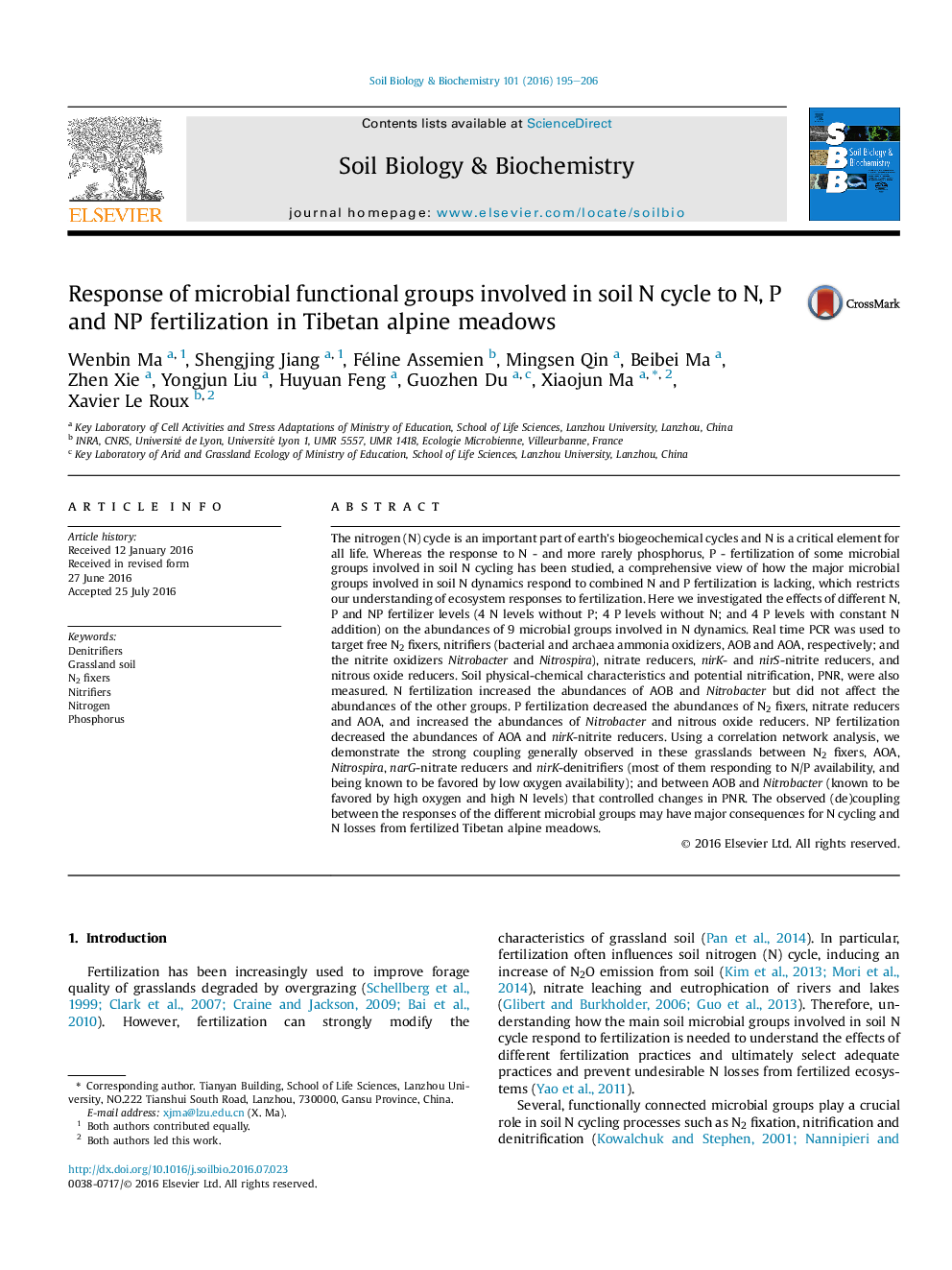| Article ID | Journal | Published Year | Pages | File Type |
|---|---|---|---|---|
| 8363480 | Soil Biology and Biochemistry | 2016 | 12 Pages |
Abstract
The nitrogen (N) cycle is an important part of earth's biogeochemical cycles and N is a critical element for all life. Whereas the response to N - and more rarely phosphorus, P - fertilization of some microbial groups involved in soil N cycling has been studied, a comprehensive view of how the major microbial groups involved in soil N dynamics respond to combined N and P fertilization is lacking, which restricts our understanding of ecosystem responses to fertilization. Here we investigated the effects of different N, P and NP fertilizer levels (4 N levels without P; 4 P levels without N; and 4 P levels with constant N addition) on the abundances of 9 microbial groups involved in N dynamics. Real time PCR was used to target free N2 fixers, nitrifiers (bacterial and archaea ammonia oxidizers, AOB and AOA, respectively; and the nitrite oxidizers Nitrobacter and Nitrospira), nitrate reducers, nirK- and nirS-nitrite reducers, and nitrous oxide reducers. Soil physical-chemical characteristics and potential nitrification, PNR, were also measured. N fertilization increased the abundances of AOB and Nitrobacter but did not affect the abundances of the other groups. P fertilization decreased the abundances of N2 fixers, nitrate reducers and AOA, and increased the abundances of Nitrobacter and nitrous oxide reducers. NP fertilization decreased the abundances of AOA and nirK-nitrite reducers. Using a correlation network analysis, we demonstrate the strong coupling generally observed in these grasslands between N2 fixers, AOA, Nitrospira, narG-nitrate reducers and nirK-denitrifiers (most of them responding to N/P availability, and being known to be favored by low oxygen availability); and between AOB and Nitrobacter (known to be favored by high oxygen and high N levels) that controlled changes in PNR. The observed (de)coupling between the responses of the different microbial groups may have major consequences for N cycling and N losses from fertilized Tibetan alpine meadows.
Related Topics
Life Sciences
Agricultural and Biological Sciences
Soil Science
Authors
Wenbin Ma, Shengjing Jiang, Féline Assemien, Mingsen Qin, Beibei Ma, Zhen Xie, Yongjun Liu, Huyuan Feng, Guozhen Du, Xiaojun Ma, Xavier Le Roux,
